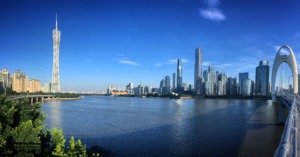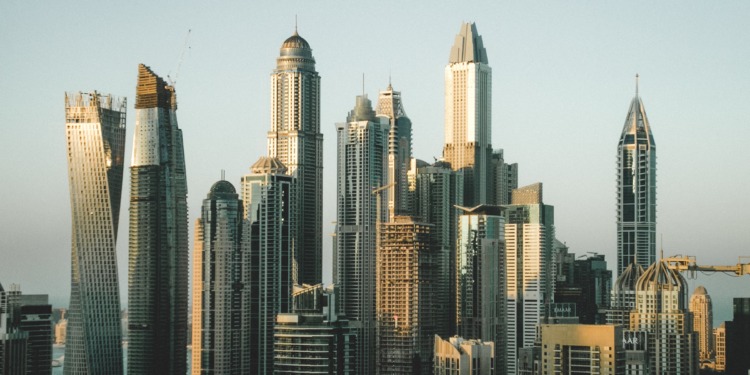Leaders from around the globe intent on tackling the climate crisis gathered in Buenos Aires this week for the C40 World Mayors Summit. There were almost twice as many participants than there were at the last event, and over one million people tuned in to watch the conversations via livestream on Thursday.
The event’s successes were extensive. Not only was an open dialogue facilitated between cities of vastly different socioeconomic and political circumstances, but the “Consenso de Buenos Aires” (“Buenos Aires Consensus”) was agreed upon.
This consensus demonstrates the shared commitment of C40 members and partners within the private sector to make climate funding a priority. In a clear display of this dedication, the World Bank have agreed to provide $76bn in climate financing worldwide between now and 2026.
Germany, France, and the UK were also mentioned as contributors to the C40 Finance Facility (CFF), two-thirds of which will be directed into the Global South, where nations that have contributed the least to global warming are suffering the worst of its effects.
In a further show of decisive and ambitious climate action, C40 announced that they will be collectively creating 50 million good, green jobs by the end of the decade.
C40 was founded on a belief that cities working in co-operation could help create a greener, more prosperous future.
At our #C40Summit we've opened a new chapter by pledging 50m new green jobs, & over $1 billion in funding for cities in the global south.https://t.co/utEzadJDj0
— Sadiq Khan (@SadiqKhan) October 21, 2022
The key theme of youth engagement also ran throughout the Summit.
Hilda Flavia Nakabuye, founder of Friday for Future Uganda, gave a particularly powerful speech in which she stressed the need for world leaders to include young people in decision-making, rather than solely seating them at the table for representation.
Pamela Escobar Vargas, a member of the C40 Global Youth, also spoke to this effect, stressing that “climate action will be successful only if it is just and leaving nobody behind.”
Such a need for inclusivity and collective forward movement was explored throughout the two days of presentations and discussions as we heard accounts of innovation from around the world.
The following are just some of the many examples of cities within each of our continents striving towards carbon neutrality and working to become more resilient to climate change.

Latin America
Curitiba, the capital of the southern Brazilian state of Paraná, has been referred to for some years now as “the greenest city on earth,” with their futuristic glass-tube bus stops a symbol for the city’s innovation.
Rafael Greca, the city’s mayor, explained some of the most recent additions to Curitiba’s gamut of climate initiatives during C40’s panel on “Shaping the Future of Green Finance in Cities.”
Firstly, the Iguazu River, a vast expanse of 40 million litres of water which feeds into the famous Iguazu Falls, is to be transformed into a water reserve area which can be tapped into in cases of great drought.
Additionally, Greca detailed the city’s increasing use of solar power, and their aim of eventually receiving 60% of the city’s energy from this renewable source.
They plan to install 8,500 solar panels in the city before March 2023. These panels should generate around half of the power needed to meet Greca’s aim of converting the city to run mostly on solar energy, producing around 3.5 of the 8 megawatts of power the city’s Solar Programme is targeting.
North America
Representatives from North America included Eric Garcetti and Eric Adams, mayors of Los Angeles and New York respectively.
Garcetti, firstly, announced Los Angeles’ decision to ban oil drilling in the city. This choice was driven in part by LA’s “moral duty to lead” in the transition away from fossil fuels since the city has played a historically large role in the problem, producing 25% of the world’s oil in the 1980s.
LA has also established a climate equity fund to hire and train underrepresented workers for sustainable jobs such as retrofitting buildings to reduce their energy consumption.
Garcetti also contributed to the conversation surrounding youth inclusion in efforts regarding the climate crisis, stating that his youth climate council are his “advisors and [his] action takers.”
Regarding New York, Adams’ presentation paid particular attention to the role of food in CO2 production. The city has implemented “Meatless Mondays” and “Plant-Powered Fridays” in schools to encourage the inclusion of more plant-based meals in children’s diets, a change that would not only be beneficial for the environment, but also for young peoples’ health.
Hospitals have seen a change too, with plant-based alternatives now available for every meal. According to Adams, this is a shift that has been very well received, with 60% of patients now opting for vegan meals.
Europe
The concept of the 15-minute city was referenced at multiple points of the Summit, with Paris named as one of the first and best examples of this concept in action.
Professor Carlos Moreno, the developer of the 15-minute city idea, described it as “a peaceful revolution for happy proximity” that allows humans to live in harmony with nature.
At the concept’s core is the goal that residents should be able to reach most of their daily necessities through just a 15-minute walk or cycle. This would not only give people more free time in their day-to-day lives, but it would also reduce the need for travel and consequently lower emissions.
Horacio Rodriguez Larreta, the mayor of Buenos Aires, expressed his aims to follow in Paris’ footsteps and transform Argentina’s capital to also prioritise proximity.
Related Articles: C40 Cities Summit: Mayors Called to Fight the Climate Crisis | ICLEI World Congress: “Sustainability Together”
In Rotterdam, the focus is now being placed on the city’s coastline.
The Port of Rotterdam is the largest seaport outside of East Asia and has previously been responsible for 20% of the Netherlands’ pollution.
The city’s mayor, Ahmed Aboutaleb, explained that they are currently working to tackle this issue by constructing a pipeline 80km in length connecting the port with the North Sea. Through this pipeline they will be able to move the carbon emissions produced by refiners at the port and store them in what were previously oil and gas fields.
It is expected that this construction, which will reduce the Netherlands’ emissions by a massive 12 million tonnes, will be completed in 2026.
Africa
Mayors from African cities contributed to the conversation in a different way.
Whilst we did hear from Elizabeth Tawiah Sackey, the mayor of Accra, regarding her city’s plans to introduce an informal waste centre to improve waste management and cut emissions, Barthélémy Toye Dias, the mayor of Dakar, Senegal, explained that there are barriers to funding in place in Africa unlike those elsewhere.
“When we talk about Africa, we always have to talk about politics,”
– Barthélémy Toye Dias, mayor of Dakar.
Toye Dias explained that funding given to the continent’s national governments very rarely goes towards the intended purpose of building climate resilience, with it instead being spent on further enriching those “at the top.”
To overcome this barrier, he urged those providing the funds to find ways to work directly with the cities and the local governments themselves, rather than allowing the money to enter the treasury.

Asia
Guo Yonghang, the mayor of Guangzhou, China, who participated virtually, explained that his megacity was focused on biodiversity protection and preservation, with the overarching goal of making Guangzhou’s “sky bluer, mountains greener, and water clearer.”
They are currently undertaking a project to expand the South China National Botanical Garden, a green space that should contain around 20,000 species of plants by the programme’s completion.
The Haizhu Wetlands, an area three times the size of Central Park, were also recently restored in Guanzhou’s city centre.
In Tokyo, their HTT (Herasu (to save), Tsukuru (to generate), Tameru (to store)) initiative is being put into practice through a solar panel mandate requiring all new homes in the city to be fitted with solar panels from 2025.
The city’s municipal government has also reported plans to build a high-tech, sustainable city on reclaimed land in its bay area. New technologies will be used for this project with the city designed to be carbon-neutral and resistant to future climate crises.
Australasia
We also heard from Sally Capp, the mayor of Melbourne, who explained their plan to “future-proof” the city against the increasing heat.
Their Greenline Project aims to increase tree canopy coverage along the north bank of the city’s river by 40%. They also intend to plant 3,000 trees city-wide each year to reduce the peak temperatures Melbourne is able to reach in summer.
Additionally, a virtual urban heat map has been made available to all citizens so that during the hottest months they can easily find shaded areas and routes.
Alcaldes del mundo y de la Argentina trabajando juntos desde Buenos Aires en el cuidado del ambiente. ¡Orgullosos de ser sede del C40! pic.twitter.com/xikEEIbPqR
— Horacio Rodríguez Larreta (@horaciorlarreta) October 19, 2022
Whilst the Summit certainly left both participants and viewers alike with a feeling of urgency, the rapidly diminishing time we have left to act being frequently reiterated, it also left us with a vast amount of hope.
These innovative solutions demonstrate the shared commitment of C40 leaders to take action in their cities, whilst also promoting inclusivity through their efforts.
Sadiq Khan, the mayor of London and C40 Chair, closed the Summit with the message to COP27 leaders: “where our cities have led your countries must now follow.”
Indeed, it seems that C40 have set a high standard for the conversations these global events should generate, and the progress that should be achieved.
If a similar dedication to change is shown at COP27 next month, humanity’s prospects in the fight against the climate crisis will become drastically more promising.
Editor’s Note: The opinions expressed here by the authors are their own, not those of Impakter.com — In the Featured Photo: Dubai Marina Skyline. Featured Photo Credit: Kate Trysh.










